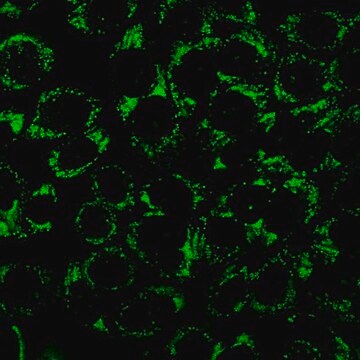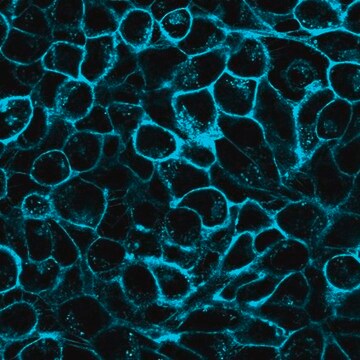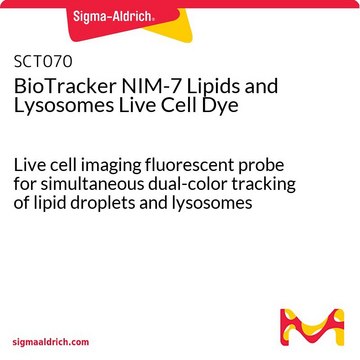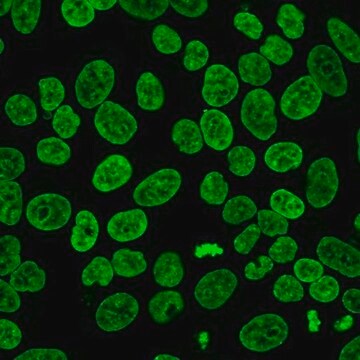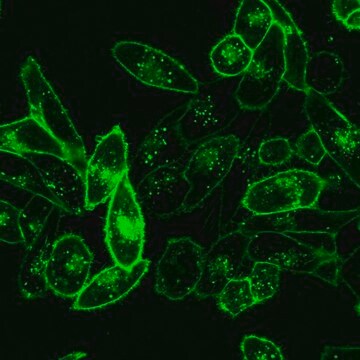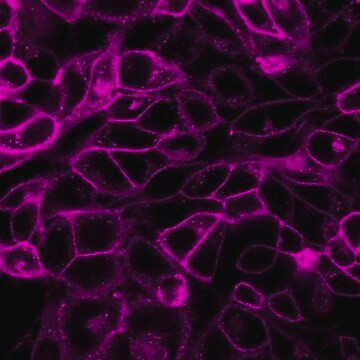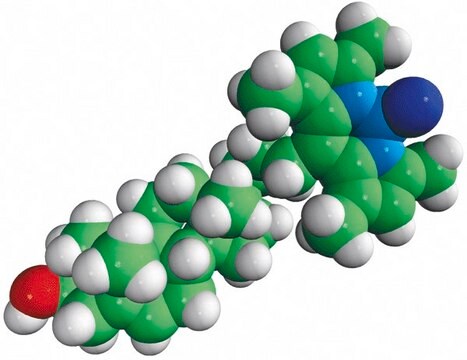SCT241
BioTracker™ LD-1 Near-IR Lipid Droplet Live Cell Probe
Synonim(y):
BioTracker™ LD-1 Near-IR Lipid Droplet Live Cell Probe, Lipid Droplet Live Cell Dye, Lipid Droplet Live Cell Probe, Lipid Droplet Probe, NIR Lipid Droplet Dye
About This Item
Polecane produkty
opakowanie
vial of 1 mg
Poziom jakości
producent / nazwa handlowa
Millipore
metody
cell culture | mammalian: suitable
flow cytometry: suitable
metoda wykrywania
fluorometric
Warunki transportu
dry ice
temp. przechowywania
−20°C
Opis ogólny
This LD-1 probe is chemically optimized for the low-polarity, high-viscosity microenvironment found in lipid droplets.
In contrast with Raman microscopy and transmission electron microscopy (TEM) fluorescent small molecule probes have been developed as promising tools for detecting LDs . Advantages of fluorescent LD probes include the capability for real-time and in vitro testing, plus excellent selectivity and sensitivity.
Spectral properties
Absorbance : 650 nm
Emission (max): 745 nm
Reference
Wu X, Wang X, Li Y, Kong F, Xu K, Li L, Tang B. 2022. A near-infrared probe for specific imaging of lipid droplets in living cells. Anal Chem. 94(11):4881–4888.
Zastosowanie
Cechy i korzyści
Opis wartości docelowych
Postać fizyczna
Przechowywanie i stabilność
Informacje prawne
Oświadczenie o zrzeczeniu się odpowiedzialności
Kod klasy składowania
11 - Combustible Solids
Klasa zagrożenia wodnego (WGK)
WGK 3
Temperatura zapłonu (°F)
Not applicable
Temperatura zapłonu (°C)
Not applicable
Certyfikaty analizy (CoA)
Poszukaj Certyfikaty analizy (CoA), wpisując numer partii/serii produktów. Numery serii i partii można znaleźć na etykiecie produktu po słowach „seria” lub „partia”.
Masz już ten produkt?
Dokumenty związane z niedawno zakupionymi produktami zostały zamieszczone w Bibliotece dokumentów.
Nasz zespół naukowców ma doświadczenie we wszystkich obszarach badań, w tym w naukach przyrodniczych, materiałoznawstwie, syntezie chemicznej, chromatografii, analityce i wielu innych dziedzinach.
Skontaktuj się z zespołem ds. pomocy technicznej